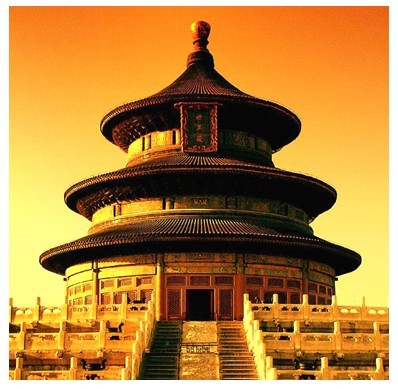Temple Of Heaven In Beijing
 Temple of Heaven is situated in the southern part of the city. It was built in 1420, covering an area of 273 hectares. The Temple was the place where the emperors of the Ming and Qing dynasties worshipped heaven and prayed for good harvests. They came here twice a year, on the 15th day of the lst lunar month and on winter solstice. At first, both heaven and earth were worshipped here. After 1530 when the Temple of Earth was built in the northern suburbs, only' heaven was worshipped in this temple.
Temple of Heaven is situated in the southern part of the city. It was built in 1420, covering an area of 273 hectares. The Temple was the place where the emperors of the Ming and Qing dynasties worshipped heaven and prayed for good harvests. They came here twice a year, on the 15th day of the lst lunar month and on winter solstice. At first, both heaven and earth were worshipped here. After 1530 when the Temple of Earth was built in the northern suburbs, only' heaven was worshipped in this temple.
Temple of Heaven is regarded as one of the greatest architectural structures in the world. Some environmental artists and gardeners describe the temple as a place where people can talk to the heaven. In Beijing, four imperial temples were built during the Ming and Qing dynasties (1368-1911). At the southern end of the city axis is the Temple of Heaven. It is the most important of the four. The other three are the Altar of the Earth in the north, the Altar of the Moon in the west, and the Altar of the Sun in the east just behind the Beijing Friendship Store. All of them are still standing, but The Temple of Heaven is the largest group of temple buildings of its kind in China, nearly four times larger than the Forbidden City. The whole building complex was designed in a way that makes you feel close to heaven.
The temple's architecture has two themes. One is "on the earth," while the other is "in the heaven." The square-shaped palace for fasting in the west of the temple appears like a "forbidden city" in smaller size. The circular shaped Qiniandian (Hall of Prayer for Good Harvests) and Huanqiu (Circular Mound Altar) are thought to be connected with heaven. This symbolizes the second theme which dominates the whole temple.



